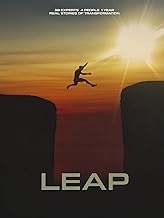While Elon Musk is in Los Angeles showing off the future of personal transport via the Cybertruck, another, unaffiliated group is taking one of his most popular ideas to market, with augmented reality as a key part of the plan.
This week, the HyperloopTT team unveiled its detailed plans for its next-generation commuter rail system, using the Magic Leap One as tool to show off how the system will work.
- Don't Miss: Hands-On -- Magic Leap App Obsess Lets You Create a Fashion Store Pop-Up Nearly Anywhere
If you're not familiar with the idea of the hyperloop, it's an idea that Musk proposed back in 2012 for a high-speed, tube-based system that would use frictionless, pressured capsules to transport passengers to between major cities faster than any other ground-based option.
Musk's original vision was a dedicated loop that would transport passengers from Los Angeles to San Francisco in around 30 minutes at speeds of over 700 miles per hour.

HyperloopTT's Magic Leap presentation
However, instead of keeping the idea for himself and turning it into one of his many companies, he instead released the technical broad strokes of the plan to the public, inviting anyone with the resources and inspiration to give the system a try.
Several companies entered the fray with varying levels of commitment to building the system. Some have faded away while others, like the HyperloopTT (with over $31 million in funding), have made progress in efforts to make the system a reality.
This new immersive presentation using the Magic Leap One is designed to give local government officials in the US better insight into the company's "Great Lakes Hyperloop Feasibility Study."
The company's plans for the system would allow passengers to travel from Chicago to Cleveland in about 37 minutes and from Cleveland to Pittsburgh in about 24 minutes. According to the company's proposal, its version of the hyperloop would travel an average of 500 to 600 miles per hour (400 to 500 miles per hour through mountain terrain) and would carry commercial freight in addition to individual passengers.
One standout feature of the system is that it would incorporate what the company calls "augmented reality windows" which would overlay interactive information and content over the passing scenery to inform and entertainment passengers (as well as likely offer yet another platform for advertisements).
The Magic Leap experience detailing these plans was developed by Nomtek, a software studio with offices in the UK, Germany, Poland, and the US. Although the experience is available to the general public, I had a chance to sample it first hand and it's one of the better Magic Leap presentations I've ever used.
From the animated 3D constructs showing off how the hyperloop capsules and stations will work, to the interactive information components that reveal more detail about the technology, the presentation is a prime example of how high-end AR systems like the Magic Leap One can transform a traditional proposal into an experience that truly sells an idea by immersing the user a near-future reality.
Cover image via HyperloopTT
































Comments
Be the first, drop a comment!